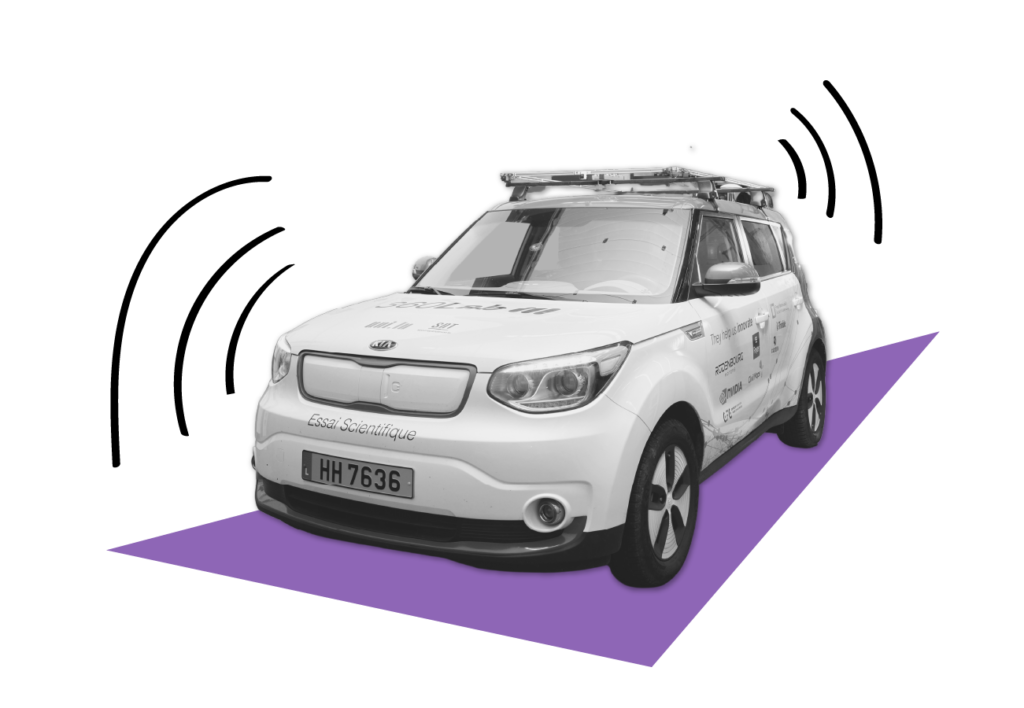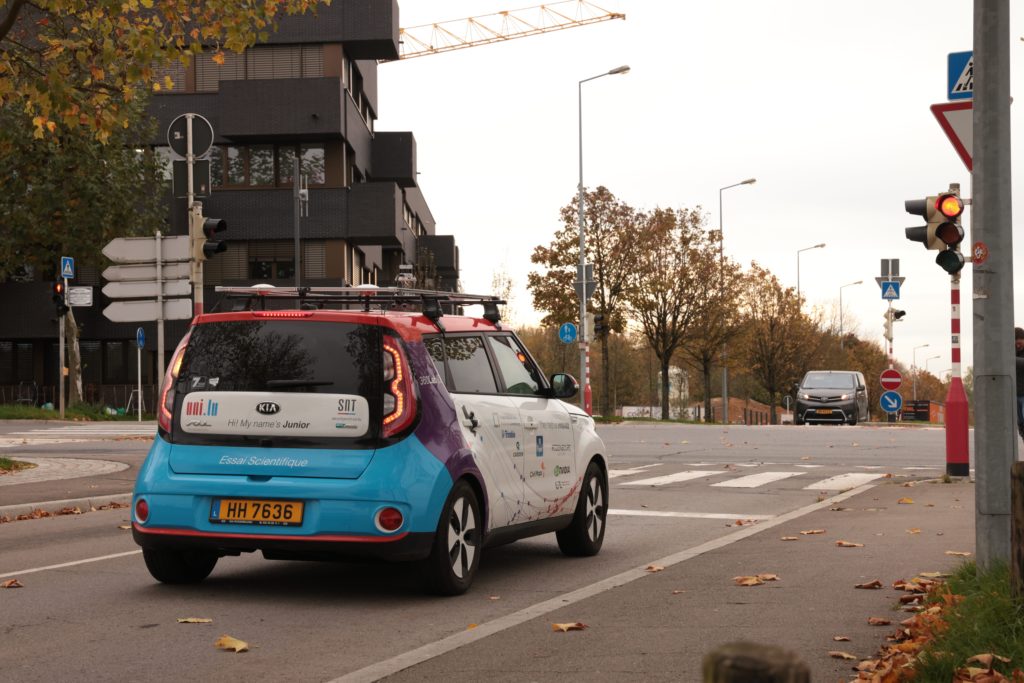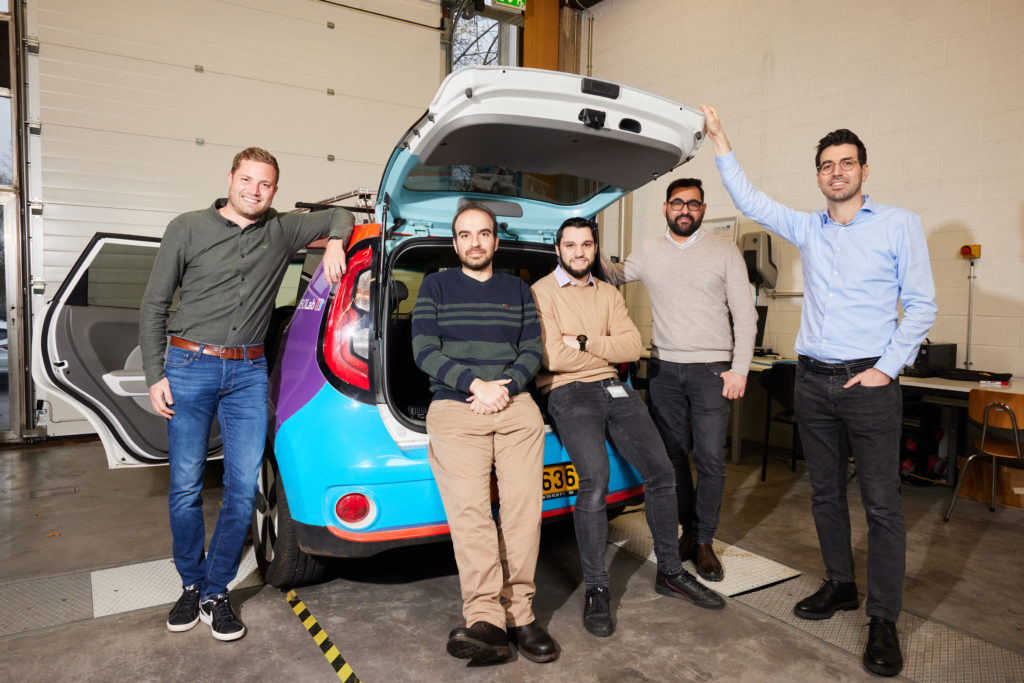Autonomous vehicles & IoT

On a cloudy day in November, a Kia Soul pulled out of the Adenauer parking lot on Kirchberg and joined the flow of traffic, all by itself. This made it the first time a single-family autonomous car drove on a public road in Luxembourg with members of the public as passengers.
That Thursday, 3 November 2022, the University of Luxembourg’s Interdisciplinary Centre for Security, Reliability and Trust (SnT) was demonstrating its autonomous car for the national press. The 360Lab research team, led by Prof. Raphaël Frank, offered the opportunity to ride-along in the car, giving the journalists the chance to experience autonomous navigation.
The autonomous car, called Junior, is the test platform for navigation technologies and high definition (HD) maps being researched at SnT’s 360Lab. The mood on the day was celebratory as the demonstration was the culmination of five years of work by the research team. The 360Lab is the first thematic research laboratory focusing on smart mobility in the country, and it serves as an umbrella to conduct strategic and collaborative research in the broader area of mobility innovation.

A crucial step to realising fully autonomous driving is to have a vehicle be able to navigate to its destination reliably. A human only needs directions such as right and left turns, as much of the information about any route is discovered and reacted to immediately. Elements like which lane to drive in, how to manage a construction deviation, and new signage are all taken in stride by the driver behind the wheel. Not so with a self-driving car. For them, such details need to be collected and processed for the car to drive safely. That is why High Definition Maps exist, as they provide the information that road signs and markings give to drivers. HD maps are the basis for autonomous navigation, and are exponentially more detailed than standard definition (SD) maps. SD Maps are those commonly used by traditional navigation services’ found in cars and mobile devices.
HD Maps mean that local research into autonomous navigation is vital, as HD maps make autonomous navigation more flexible and effective. By conducting Luxembourg-based research, the 360Lab team is contributing to the foundation of an autonomous driving future for the country. Through their work they are developing HD maps of the region, including Kirchberg.
“Autonomous driving holds the potential to create a mobility ecosystem that is both safer and more sustainable. Full autonomy will be a paradigm shift in mobility, improving traffic and reducing congestion by reducing the number of vehicles.”
Prof. Raphaël Frank, SnT Tweet

“You can’t take an autonomous vehicle and just drive it anywhere, the map is really important. That is why this demo is so exciting, it is not about the car itself, but the software inside that is enabling it to drive on Kirchberg roads,” said Dr. Gamal Elghazaly, member of the 360Lab team.
Beyond the technical research, there are also many logistics involved in researching autonomous navigation. As part of their research, the team needed to gain authorisation for the single-family car to drive on Luxembourgish roads. By doing this, they have introduced smart mobility into the legal processes of Luxembourg, which has the potential to make it easier for commercial operators to roll-out autonomous driving services in the future.

“You can’t take an autonomous vehicle and just drive it anywhere, the map is really important. That is why this demo is so exciting, it is not about the car itself, but the software inside that is enabling it to drive on Kirchberg roads.”
Dr. Gamal Elghazaly, SnT Tweet
“Autonomous driving holds the potential to create a mobility ecosystem that is both safer and more sustainable. Full autonomy will be a paradigm shift in mobility, improving traffic and reducing congestion by reducing the number of vehicles,” said Prof. Raphaël Frank on the day. “Our mission is to have a research platform where we demonstrate the technology of autonomous mobility that we can use for research and education. Today’s demo achieves this goal as it is the first time that members of the public get to experience the functionality of the car first-hand.”